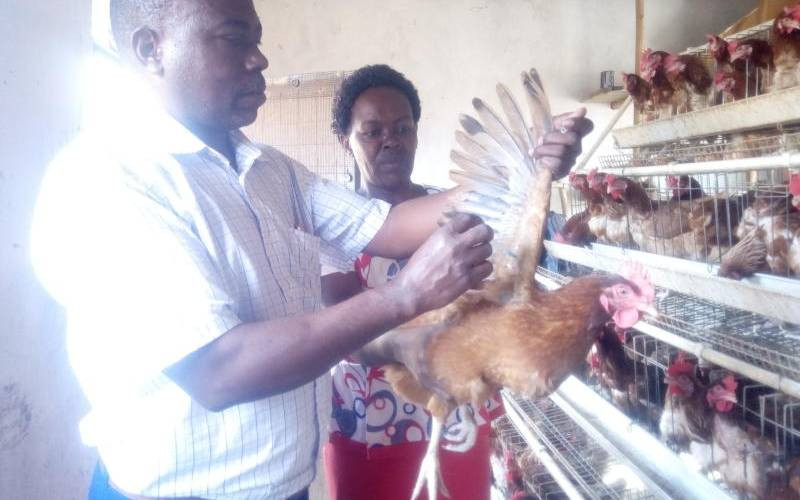
Fowl pox is a disease of birds caused by a virus called Poxiviridae.
The disease is a major concern globally, with indigenous (kienjeji) breeds the most affected locally because they are non-vaccinated.
The disease rarely affects broilers and is common during the rainy season when flies and the insect population are high.
Biting or sucking insects spread the fowl pox virus directly through contact with infected birds through broken skin, oral or respiratory routes.
While fowl pox is a disease of chickens, turkeys, pheasants and even ducks, it can also infect the wild bird population.
It is an old disease seen on growing birds and characterised by the appearance of warts or blisters on the skin surfaces of the head, wattles, comb and can spread to the skin covering of the back and the legs.
The disease that affects the outer surfaces of the chicken is known as cutaneous fowl pox and will heal on its own without any treatment.
Infected birds recover within two weeks without any intervention. The other form will cause similar lesions but on the mucosal (inner) surfaces of the buccal cavity, respiratory linings and in rare cases, affect internal organs such as the liver and kidneys.
The diphtheritic type may cause mortality of up to 50 per cent or more if the birds do not recover fully in two weeks.
Affected birds completely go off-feed, waste away, and eventually die. Farmers complain of poor growth rates, and if it affects birds in lay, there will be a drop in egg production.
Having an attentive worker on a farm is important. In all production systems, workers may detect signs and symptoms of a disease when birds suddenly lose interest in feed and water intake.
Birds become restless due to intense insect bites on the exposed skin on the backs, head, and legs. Birds will also stagnate in their growth profile; they change in appearance with noticeable swellings in the eyes.
Unfortunately, most workers will rely on mortality as a key indicator of the bird’s health. In case of fowl pox, mortality is seldom an issue, and in any case, a dead bird is often a sign that you are too late to intervene.
If you can watch and keep track of the earlier-mentioned traits accurately, you might be able to take actions that will prevent birds from dying.
Monitoring and keeping track of the daily mortality can warn you or your veterinarian in case of infection.
Stay informed. Subscribe to our newsletter
There is no known treatment against fowl pox disease, and affected birds tend to recover on their own if there are no secondary bacterial infections.
In 30 per cent of the clinical cases, there may be complications with bacterial infection; if this happens, a vet can resolve it through topical antibiotic treatment.
Any antibiotic application will need veterinary advice. Alternatively, you can spray the affected wounds with iodine or neomycin spray.
To control the disease, one must vaccinate the birds at 5-8 weeks using live vaccines applied through a wing web stab.
Vaccine manufacturers first introduced fowl pox vaccines in 1926, and the good news is that where farmers religiously vaccinate their flocks, no fowl pox has occurred.
Recently, pharmaceutical companies have developed vaccines that hatcheries can give on day one as an injection that provides lifelong immunity to the birds.
Immunisation takes place 7-10 days post vaccination. Please remember that immunisation is the best remedy for fowl pox control.
It is also important to thoroughly keep chicken houses clean and disinfected at the end of the cycle and burn any leftover poultry dust and feathers.
Finally, ensure you buy your replacement flocks from hatcheries that routinely vaccinate their breeders against this condition.
Control measures included quarantine, movement control, disinfection, good disposal of carcasses and pest and insect control strategies.
[Dr Messo is the company veterinarian, Kenchic; [email protected]]